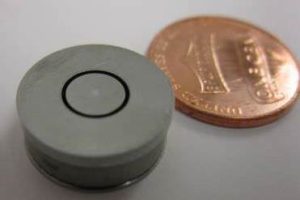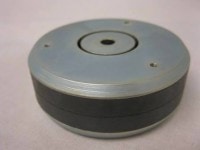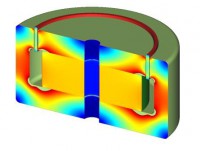The Dura Magnetics Value:

- Supply magnets for existing Voice Coil Motors designs (Rare Earth Neo and Samarium Cobalt)
- Design magnets for custom Voice Coil Motors
- Design Voice Coil Motors for application specific projects
- Manufacture Custom Voice Coil Motors
While the coil specifications are important to the VCM design and are included in any Boundary or Finite Analysis simulations, Dura Magnetics does not design nor supply coils and bobbins.
Description:
Voice Coil Motors (VCM), also called Voice Coil Actuators (VCA), are a very mature design that utilizes a magnet and yoke in conjunction with a coil. The coil and magnet are concentric about a common axis and there exists an engineered magnetic return path.

The coil is typically connected to a mechanism which translates the coil’s linear motion into a beneficial action. For example, a conventional loud-speaker uses a voice coil motor to drive a cone which converts the coil’s oscillating motion into sound energy.
The typical characteristics of a voice coil motor are a round coil, concentric with and located in a gap where a radial magnetic field is present. This field is generally developed by a permanent magnet located within the structure. The interaction between the coil’s magnetic field and the magnetic field in the gap is what gives rise to the linear force acting on the coil. (The coil’s magnetic field is due to the current flowing in coil.) The magnet’s position within the unit, the type of magnet, the surrounding structure, etc., can influence the nomenclature of the unit.

Originally, most VCMs were similar to a loud-speaker’s design. This design uses a gap whose axial length is short and the magnetic field density in the gap is very high. Because of the short gap length, this style required a longer axial length coil to create any reasonable “stroke” or axial travel. Newer designs utilized longer axial length gaps, lower magnetic field densities, and shorter coils using fewer turns of wire. This means that more of the coil operated in the gap, resulting in a mass and resistance reduction. Lower mass equals better acceleration and “settling” and lower resistance translates into greater linearity.
When a VCM / Actuator is coupled with an appropriate feedback device, amp, and controller, precise position, velocity, and acceleration control is possible. When a VCM is used in this geometry it is often referred to as a Positioning Stage or VCM Linear Stage.
Key Benefits of a VCM – Voice Coil Actuator:
- No commutation required
- Low to no hysteresis
- Zero cogging
- Fewer mechanical components compared to “screw-type” actuators
- Linear control characteristics
- High power to mass ratio
- High power to volume ratio
- Infinite position (Limited only by the encoder device.)
- High acceleration
Uses:
- Where precision linear movement is required
- Where precision force is required
- Where oscillatory motion is required
- Where Dynamic Movement is required
Similar Products / Design:
- Moving Magnet – Voice Coil Motor
- Rotary – Voice Coil Motor
Example Applications:
- Shakers – Vibrators
- Lens focusing
- Servo valves
- Positioning Stages
- Speakers


ITAR Registered & Compliant
We are registered and compliant with the International Traffic in Arms Regulations (ITAR). This qualifies us to work with items listed on the United States Munitions List (USML). We are also ITAR registered with the Directorate of Defense Trade Controls (DDTC).